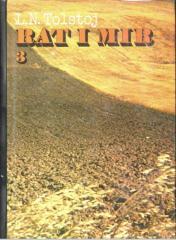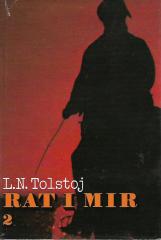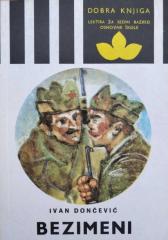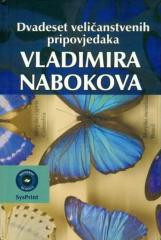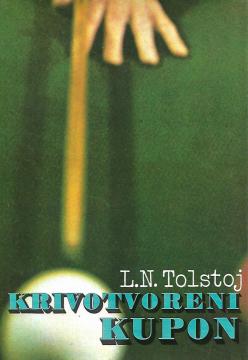
Krivotvoreni kupon i druge pripovijesti
Die Geschichten „Morgen eines Adligen“, „Aus den Aufzeichnungen des Fürsten Nechljudow“, „Notizen des Markierers“, „Die Waage“, „Zwei Husaren“, „Der Gefangene im Kaukasus“, „Der gefälschte Coupon“, „Die Todesnotizen des alten Fjodor Kusmitsch“ und „Warum?
– Morgen eines Gutsherrn (1856): Der junge Fürst Nechljudow versucht, das Leben der Bauern auf seinem Gut zu reformieren, stößt jedoch auf Widerstand seitens der Bauern und seiner eigenen Illusionen. Die Geschichte offenbart die Kluft zwischen Idealismus und Realität und spiegelt Tolstois frühe Kritik an sozialer Ungleichheit wider.
– Aus den Aufzeichnungen des Fürsten Nechljudow (1856): Während seines Aufenthalts in Luzern wird Nechljudow Zeuge der Ungerechtigkeit eines armen Musikers. Diese Episode bringt ihn dazu, über die Heuchelei des Adels und die moralische Pflicht nachzudenken und nimmt Tolstois spätere Gesellschaftskritik vorweg.
– Notizen des Markierers (1857): Die Geschichte folgt dem Leben eines Spielers, der seine Erfahrungen aufzeichnet und die zerstörerische Kraft der Leidenschaft offenbart. Tolstoi erforscht den moralischen Verfall anhand einer introspektiven Schilderung, die seine Faszination für die Psychologie widerspiegelt.
– Die Lohnskala (1887): Der Bauer Iwan entdeckt angesichts harter Arbeit seine geistige Stärke in der Einfachheit. Die Geschichte zelebriert Bescheidenheit und Arbeit und spiegelt Tolstois späte Philosophie des einfachen Lebens und der christlichen Moral wider.
– Die zwei Husaren (1856): Zwei Offiziere, Vater und Sohn, werden anhand ihres Verhaltens verglichen. Der ältere Husar ist charmant, aber unmoralisch; der jüngere strebt nach Ehre. Die Novelle kontrastiert eine romantisierte Vergangenheit mit einem moralischen Gewissen und demonstriert Tolstois frühen Realismus.
– Der kaukasische Gefangene (1872): Der russische Offizier Schilin wird im Kaukasus gefangen genommen und entkommt mit Hilfe eines einheimischen Mädchens. Die von Tolstois Erlebnissen inspirierte Geschichte zelebriert Mut und Menschlichkeit über kulturelle Grenzen hinweg und legt dabei Wert auf eine einfache Erzählweise.
– Der gefälschte Coupon (1904): Falschgeld löst eine Kette von Unmoral und Leid, aber auch Erlösung aus. Die posthume Novelle untersucht die Folgen der Sünde und die Möglichkeit spiritueller Erneuerung und spiegelt Tolstois späte moralische Vision wider.
– Die posthumen Aufzeichnungen des Ältesten Fjodor Kusmitsch (1905): Ein alter Mann, möglicherweise Zar Alexander I. in Verkleidung, führt ein asketisches Leben und sucht spirituellen Frieden. Die Geschichte spekuliert über den Verzicht auf Macht zum Wohle der Seele und spiegelt Tolstois Ideal christlicher Bescheidenheit wider.
– Warum? (1906): Ein polnischer Revolutionär kämpft gegen die imperiale Unterdrückung, verliert dabei aber seine Familie und seine Ideale. Die Novelle kritisiert Gewalt und Leid und spiegelt Tolstois Pazifismus und sein Mitgefühl für die Unterdrückten wider.
Diese Kurzgeschichten zeigen die Entwicklung von Tolstois Stil vom frühen Realismus (Zwei Husaren, Morgen eines Edelmanns) bis zu späten moralischen Parabeln (Der gefälschte Coupon, Die Waage). Inspiriert von seinen Erfahrungen im Kaukasus und seiner spirituellen Transformation nehmen sie die Themen von Krieg und Frieden und Auferstehung vorweg. Während die frühen Geschichten Gesellschaft und Psychologie erforschen, betonen die späteren die christliche Moral und die Ablehnung des Materialismus und sind daher entscheidend für das Verständnis seiner philosophischen Entwicklung.
Frühe Romane wie „Der Gefangene im Kaukasus“ wurden für ihre Lebendigkeit gelobt, während spätere Romane (Der gefälschte Coupon, warum?) wegen ihrer radikalen Ansichten umstritten waren. Kritiker schätzten den Stil, doch manche hielten die späteren Werke für didaktisch. Heute gelten sie als Glanzstücke von Tolstois vielseitigem Genie.
Es werden zwei Exemplare angeboten

